It’s been a few weeks since my last post — sorry for the radio silence. I’ve been on a whirlwind tour of southeast Asia with SAS, keynoting CMO events in Singapore, Malaysia, Indonesia, the Philippines, and India. It was a fascinating and inspiring journey, but regrettably, I didn’t find much time to write while on the road. But there are many reflections and ideas that I’m eager to share with you now that I’m back.
First, here’s the slide deck for my presentation, Combining Art & Science in Modern Marketing. Below, you’ll find an essay version of my talk. The first half explores ways in which marketing is simultaneously collapsing and expanding, while the second half makes the case for the hybrid marketer scientist.
My central thesis is that marketing vitally needs both art and science, intertwined, to pursue the idealistic-but-not-unattainable intersection of meaning, truth, and money. I’d love to hear what you think.
Art. Science. Marketing.
As a once aspiring musician, a computer scientist, and now a marketer, I’ve been thinking about how these three different worlds intersect. As stand-alone disciplines, they seem fairly dissimilar. For instance, consider the cultures of these different professions. What do they each strive for in their work?
Art endeavors for the expression of meaning. Science is the search for truth. And marketing? Well, in marketing we value money. Revenue. Customers. And other such commercial measurements of success. Nothing to be bashful about. We strive to grow businesses. It’s a noble pursuit in its own way. Or at least it can be.
But meaning, truth, and money — how often do those three things intersect?
I propose to you that, perhaps surprisingly, this three-way intersection is the future of marketing.
But let’s start with a little science. Science is the discovery of knowledge through empirical observation. I’m in awe of scientists. They tackle the really big questions, such as, “Is the universe collapsing or expanding?” (Good to know if you’re planning a long-term holiday.)
Let us tackle a slightly more modest question: “Is marketing collapsing or expanding?” Like a scientist would, we’ll consider different hypotheses and see if the empirical evidence supports them.
Hypothesis #1: Marketing is Collapsing
Our first hypothesis: marketing is collapsing.
Well, certainly the distance between marketing and customers is collapsing. Consider the distance that used to exist in the buyer’s journey. We’d hit our target audience with a marketing stimulus, typically advertising, to build awareness and interest. Time would go by. At some point in the future, the prospect would hopefully make a buying decision — choosing between our brand or a competitor’s.
A.G. Lafley of Proctor & Gamble called this the first moment of truth. When the customer finally experiences what they bought, then that’s the second moment of truth — do they like it? Would they buy it again?
The important thing to note here is that the physical and temporal distance between that marketing stimulus and an actual interaction with the customer could be quite large. Days. Weeks. Longer. This is why the concepts of recency and frequency were so important in advertising.
But in our digital and mobile world today, that distance has evaporated. Now, when someone encounters a marketing stimulus, they can instantly pursue their curiosity online. Google calls this the zero moment of truth, or ZMOT. Prospective customers can visit your web site, search to see what other people have to say about you, check out your social media presence, look up your competitors, see what their social network friends and colleagues think about you, and so on.
The distance between a marketing stimulus and a customer experience has collapsed to a click. And buyers can be won or lost in this crucial zero moment of truth.
The distance between customers and each other is collapsing. Because most of the content in the ZMOT is created not by you, but by them. Other customers, other prospective buyers, customers of your competition, and a whole global cast of advocates, critics, and influencers. And they’re all intermingling with effectively zero distance between them.
Brian Solis visualizes this as the ecosystem of the connected customer, where at each stage of the buyer’s journey — awareness, consideration, evaluation, purchase, experience, and (hopefully) loyalty — there are “influence loops” with others. Buyers going through this journey don’t just extract information from this electronic crossroads; they feed back into it, even at their earliest touchpoints.
As another effect of the ZMOT, the distance between different media and channels is collapsing. Even in digital, for quite some time, we’ve been able to organize marketing in different silos: advertising, PR, social, email, search, etc. Interference effects between these different efforts were relatively small.
But increasingly, paid media, owned media, and earned media are colliding in that great big melting pot of connected customers. Marketing produced in silos increasingly looks disorganized or schizophrenic in the eyes of customers, who fluidly navigate between these different kinds of media without even recognizing the boundaries.
The folks at Altimeter Group call this converged media. And it requires a new approach to marketing management that is able to define and execute strategies in an inherently cross-media fashion — keeping in mind that you only directly control a few of the many moving parts in this great convergence machine.
In converged media, we also see that the timeframes in which marketing decisions are made are collapsing. This phenomenon is particularly apparent in so-called real-time marketing.
What is real-time marketing? I like this definition from the head of global brand marketing at GE — which makes clear that this isn’t just a consumer marketing sensation, but applicable in B2B as well: “Real-time marketing is the ability [to delight] your audience or customer into engaging with your brand around a shared moment.” That shared moment may revolve around something in the real world, or it may be a purely virtual connection.
There have always been different decision cycles for marketing. Typically, shorter decision cycles were for more tactical or in-the-weeds choices, while longer cycles were for more important and strategic decisions. But in this age of real-time marketing, we’re increasingly faced with short decision cycles that can nonetheless be important and strategic. And that requires higher metabolism marketing management to make effective decisions in these collapsed timescales.
And finally, we have to acknowledge that the barriers to entry for potential competitors are collapsing. With digital platforms, combined with the dynamics of connected customers, innovative new products and services can achieve massive adoption in a relatively short period of time. There was a recent article in Harvard Business Review that illustrated how these kind of “big bang disruptions” can upend existing markets in a frighteningly fast window.
For one example, consider how Garmin and TomTom lost the vast majority of their market capitalization within two years after navigation apps were introduced on the iPhone and Android. For GPS device manufacturers, this was their entire business; in the smartphone ecosystem, this was just one of a million apps. They were blind-sided by a digital innovation that didn’t come from any of their traditional competition.
Welcome to the new, hyper-fast strategic playing field.
So clearly there are lots of examples of how marketing is collapsing in time and space. But what about the alternative hypothesis?
Hypothesis #2: Marketing is Expanding
Our alternate hypothesis: marketing is expanding. What evidence do we have of that?
Certainly the number of touchpoints with prospects and customers is expanding. “Digital” isn’t a single touchpoint, but a multitude of touchpoints. Across our own web sites and applications — our owned media, if you will — and the ever-blossoming social media landscape, there can be literally dozens of points where we can and should engage with our audience. It’s the most fundamental law of marketing: where our customers go, we must follow.
Across all these touchpoints, the quantity of content that marketing must produce is expanding. At every stage of the buyer’s journey, we are competing for attention, requiring quality content to entertain, educate, inspire, and convince prospects. Fluff and spin is either ignored or viewed detrimentally. We don’t just have to produce more content, we have to produce better content.
To meet this challenge, we’re expanding the sources we work with to create great content: sales, partners, customers, subject matter experts who were formerly buried deep in our organizations, third-party bloggers, etc. Nearly everything in a company’s operations and broader sphere of influence has content marketing potential; but it’s a big job to cultivate, harvest, and refine this bounty.
The number of devices customers use to reach us is expanding. Across all these different touchpoints, we need to deliver content and experiences that work on computers, smartphones, tablets — with an eye towards future devices, such as Google Glass, the mythical Apple TV, digitally-enabled cars, and so on. We need to consider how multiple of these devices are used together in concert, multi-screening. It’s our fundamental law again: we must be reachable in the ways that customers want to reach us. In the core 4 P’s of marketing, this is the digital equivalent of “place.”
To help us conquer this expanding digital landscape, the number of technologies available to marketers is expanding accordingly. There are now dozens of major marketing platforms and suites — SAS is one — and literally hundreds of more specialized point solutions — my company, ion interactive, is one of these.
There are so many powerful software capabilities that marketers can bring to bear in their work today. But selecting the right pieces for your own marketing technology strategy and operationalizing them throughout your marketing team is a challenge in itself. And while there is some consolidation among marketing technology vendors, with the goal of taming this menagerie, the pace of new product innovations from entrepreneurs continues to accelerate in parallel — because the environment in which we’re all operating is continuing to evolve. This is a proverbial blessing and curse.
In turn, the data generated by these digital touchpoints and technologies are expanding exponentially. These are the data generation engines that are feeding the “big data” movement. As I wrote in a recent article for Chief Marketer, everything digital generates data, “a gushing fire hose of information of customer behaviors, intents, and preferences.” This data is a marketing gold mine, but it takes considerable picking and panning to extract the nuggets buried here.
As the world becomes more and more digital, the budget allocated to digital marketing is expanding as well. Companies can no longer afford to treat digital as a side show, a science fair project — for many, it’s now the leading interface to their audience. A recent survey of global CMOs by Accenture Interactive found that 66% plan to allocate at least 1/4 of their budget towards digital marketing in the year ahead; 23% plan to allocate over 1/2 of their budget to digital. We’re crossing a major tipping point.
This re-prioritization of marketing investment is motivated by how the role of marketing in the customer lifecycle is expanding. A recent CEB survey of B2B customers found that 57% of their buyer’s journey was being conducted online before they ever talked to a salesperson. Research by Google and Shopper Sciences found a similar dynamic in consumer purchases — especially considered decisions such as cars, travel, electronics, insurance — where prospects would examine as many as a dozen sources online before making their decision.
This expanding role of the ZMOT in customer acquisition is the responsibility of the marketer — we’re winning (or losing) customers before sales ever enters the conversation.
All this leads to the powerful fact that the strategic importance of marketing in the C-suite is expanding. Marketers are moving from sergeants of tactical communications to generals of strategic customer development. In a survey of marketing managers by Gartner last year, only 9% felt that marketing in their company was strategic in nature. But looking forward, 2 years from now, 67% expect marketing to be primarily strategic — a 7X increase. And it’s not just marketers who recognize this elevation of their office. More importantly, it’s reflected in the relationship between CEOs and CMOs. As AdAge reported last month, CMO tenure has doubled over the past 6 years.
Marketing Is Multi-Dimensional
So is marketing collapsing or expanding? The evidence implies both.
And, indeed, that’s the obvious answer. We don’t have to dogmatically chose one or the other. Marketing is both collapsing and expanding along multiple dimensions. Just because some aspects of marketing are collapsing in no way restricts other aspects of marketing from expanding at the same time.
Which brings us back to the intersection of art, science, and marketing.
There doesn’t have to be a Pareto trade-off between these worldviews. There isn’t in the real world of art and science: we can simultaneously have more physics and more poetry. We can choose a synthesis of all three. Marketing can blend art and science together to simultaneously achieve meaning, truth, and money.
Not only is the possible, but I propose that this is the future of business:
- Our new generation of customers and employees seek more meaning from our brands.
- The connected customer ecosystem of the ZMOT reveals truth — whether we like it or not — so we better embrace it rather than try futilely to “spin” it.
- And, of course, we still need to make money to have our organizations last and thrive.
I know, this sounds almost quixotic.
But this is achievable. The key is as we build (or rebuild) the modern marketing department, we need to look beyond specialized verticals of art or science — the archetypal “creative” and “analyst” roles — and instead embrace hybrid professionals and construct hybrid teams.
Hybrids, people who seamlessly blend previously disparate disciplines, will naturally think across silos. Approaches that we previously might have framed as either/or choices, they will innately view through a unified lens. This is how paradigm shifts come to revolutionize science — and will revolutionize marketing as well.
In my opinion, the definitive hybrid of modern marketing will the marketer scientist.
Hybrid Marketing: From Marketer to “Marketer Scientist”
We behave according to our identity. And while it’s hard to fundamentally change who we are — and I’m not suggesting anyone should alter their core principles or passions — our lives and our careers evolve by the way we’re willing to extend and adapt our identity. For instance, we may start out as a student, make early progress as an individual contributor, advance into managing and leading other people, and so on. Our professional identity develops, expands, and metamorphoses over time.
This is a natural and healthy process. Given that, I’d ask you to consider an evolution of your identity from “marketer” to “marketer scientist.”
What’s a marketer scientist? Let’s keep the definition intentionally broad, but it’s a combination of a traditional “marketer” competencies — storyteller, brand champion, customer advocate — with new “scientist” like capabilities, such as data analyst, experimentalist, technologist, and systems thinker.
While it’s an oversimplification to frame it as combining creative right-brain stuff and analytical left-brain stuff — because marketers have always had an analytical component to their work and scientists are immensely creative in their endeavors — it’s probably a helpful oversimplification to grok the general idea.
We look to the right brain for meaning, the left brain for truth, and the unification of the two as a way to make money in modern marketing.
To flesh out this vision, let’s examine 8 characteristics of the marketer scientist — four from the marketer’s DNA and four from the scientist’s DNA — and how they intertwine.
Storyteller (Marketer DNA)
Above all else, marketers have been storytellers. One of Seth Godin’s popular books was All Marketers Are Liars — which he recently rechristened as All Marketers Tell Stories — that celebrates the art of great storytelling in marketing. Read his new foreword for an explanation of his original link-bait-y title. In short, he argues that marketers must answer three questions:
- What’s your story?
- Will the people who need to hear this story believe it?
- Is it true?
(Note that last question emphasizes the importance of truth in marketing — the book’s subtitle is “Why Authenticity is the Best Marketing of All.”)
In the context of the marketer scientist, my point is that storytelling is as important as ever. The science half of this hybrid does not diminish the power of telling compelling stories. On the contrary, it makes storytelling even more important because the science (ideally) lets you target the right story to the right individual at the right time — but if the story lacks resonance, all that science is worthless: the recipient will treat it as spam.
In the digital space, where everyone can publish, the competition among stories is ridiculously intense. To break through the cacophony, your storytelling must sing. Not hum-in-the-shower sort of warbling, but wooing and wowing like Frank Sinatra, Johnny Cash, Adele — whomever’s voice vibrates in your soul.
I love this cartoon by Tom Fishburne on brand storytelling. Don’t be that poor, tone-deaf bloke!
Data Analyst (Scientist DNA)
Marketers have always worked with data to a certain extent. But most of that data has been relatively high-level “confirmation” data — metrics of past performance and industry stats that could be woven into our storytelling. Acquiring that data was often slow, expensive, or extremely limited in its format.
But in our digital world of effectively infinite data, the constraints on acquiring and manipulating data are evaporating. The challenge that has emerged instead is making sense of it all, putting all this data to good use. This demands dramatically increased data fluency at a couple of levels in marketing.
First, as an organization, marketing needs to have the technical capability to manage all this “big data.” Given the volume and velocity of all this data flooding in, this data management responsibility is not trivial. There’s great technology out there to handle this, but it requires a leadership commitment to data as process, not just an asset, and an architectural vision of how to integrate it into marketing operations. (This is why marketing operations will likely become king.)
Second, and more importantly, marketing management needs to become more data-driven. Not everyone in marketing needs to be a data scientist, but everyone in marketing should be data savvy: comfortable using analytics and data-driven decision making. Looking to data not just for confirmation, but proactively exploring data to unearth new customer insights. Harnessing data in more customer experience applications.
Data and analytics should be “democratized” in marketing, not restricted to a small priesthood of analysts.
Recent research from MIT reports that companies who have embraced analytics acknowledge that it gives them a competitive advantage — and that it also helps make them more innovative. The myth of data being boring, dry, and dull is passé — if you find data boring, you’re doing it wrong.
However, a note of caution: data has incredible power, but it is not Jack’s magic beans. There is still a vital role for management judgment, intuition, and experience to properly apply and govern data. Pragmatic marketers should seek to balance data and experience — the combination of art and science — rather than fall prey to the false dilemma of exclusively relying on one or the other.
Brand Champion (Marketer DNA)
Like storytelling, marketers have always been brand champions. But the scope of that mission was usually relatively narrow: guardian of brand standards (e.g., Pantone colors and spacing parameters for your logo) and builder of brand equity through brand marketing (e.g., advertising that was blissfully free of the constraints of precise ROI). There was the notion of the brand promise — fulfilling the expectations set by your brand image — but that responsibility was often someone else’s department.
However, in the digital world of connected customer ecosystems and the zero moment of truth, your brand is what everyone else says about you. This slide from Mary Meeker’s 2013 Internet Trends presentation nails it — on the Internet today, everybody knows if you’re a dog:
As Bob Garfield, author of Can’t Buy Me Like, wrote in an editorial There Is No Place To Hide: “Enforced transparency (your every action and inaction searchable on Google in perpetuity) and social media have not only taken every institution from its fortress and relocated it to a glass house — the whole world is standing outside that house, gaping in.”
Therefore, the role of brand champion for a marketer scientist is actually broader than ever: everything a company does, every touchpoint with customers, deserves marketing’s attention — because that’s what will be reflected in search engines and social media when people look at your brand.
Modern brand champions must champion the truth — because the truth is out there.
Experimentalist (Scientist DNA)
Marketer scientists love to experiment.
One of the greatest gifts that digital offers marketers is the ability to experiment — more cheaply, more easily, and with less risk than ever before. Pixels on screens are infinitely malleable. Gut-level, take-your-best-guess, roll-the-dice-and-pray marketing is anachronistic in a world where you can quickly just run a test. A/B test different ads, emails, landing pages — different offers, designs, content — to determine what works best.
If Yoda were a marketer scientist, he’d opine, “Test or test not, there is no try.”
Digitally native companies such as Google and Amazon thrive on this. In 2009, Google ran 12,000 experiments. Their chief economist, Hal Varian, has praised controlled experimentation as “the gold standard” for understanding cause-and-effect.
But it’s not just the number of experiments they run that is impressive. Out of those 12,000 experiments that Google ran, only about 10% of them resulted in the tested change being adopted into their business. Let that sink in: 90% of the experiments they tried, didn’t “succeed.” This reveals Google’s true cultural differentiation — they’re willing to try a large number of ideas and be okay with the fact that most of them won’t pan out.
This represents a qualitatively different approach to marketing. Conventional marketing revolved around “big bang” campaigns: plan out a major campaign, maybe do a little focus group to tweak a bit, and then let it rip, writ large. After the dust settled, many months later, only then would we tally the results, fire the people who guessed wrong and lionize those who guessed right. Survivorship bias was rampant. Test-and-learn was not politically prudent.
In contrast, embracing continuous experimentation enables what David Armano has called unconventional marketing. We can test out many more bold new ideas on a small scale, measure and improve them in a succession of rapid iterations, learn from experience, and then amplify the ones that are proven winners. We mitigate risk not by avoiding daring innovations — which is a recipe for stagnation — but by testing them early and often. Testing liberates you to innovate.
This philosophy is what propels the lean start-up movement (which doesn’t just apply to start-ups!): an accelerated build-measure-learn engine for growth. It’s the same core principles of iteration and adaptation that are driving the rise of agile marketing.
But to make this work, your organizational culture must advocate big testing from the top down — encouraging, not dissuading, experimentation.
The scientific method is the quintessential “science” part of the marketer scientist ideal.
Experience Designer (Marketer DNA)
As marketers, most of our job used to be crafting stories, i.e., churning out customer communications. And while brilliant storytelling is still essential to marketing success, it’s no longer sufficient. Marketing’s responsibility is expanding from the delivery of customer communications to the delivery customer experiences. You can cry, “mission creep!” — but it is our new mission.
There are two reasons for this:
First, as mentioned in our discussion about the ways in which marketing is collapsing, the distance between customer communications and customer experiences has shrunk to a click in so many situations. Customers follow links from ads, email, search engine, social referrals, your web site, your mobile app, etc., and they expect functional satisfaction from what happens next.
The interactions you deliver in and around the digital domain are viewed by your audience as an integral part of your product or service. The line between your marketing to get them there and what happens “after the click” may be distinct in your internal hierarchy, but it’s invisible to them. Or, more accurately, when the continuity between marketing and experience is broken — and your organizational fault lines slap them in the face — they’re quickly annoyed and offended. (“Why can’t this company get its act together? It’s like one hand doesn’t know what the other is doing!”)
Second, the joy (or frustration) your customers experience quickly gets uploaded into social media and search engines, where it influences the de facto definition of your brand. So as part of the expanded role of “brand champion,” marketers have a deeply vested interest in good experience design.
“Every single customer experience is a brand moment of truth,” said Steve Cannon, CEO of Mercedes-Benz USA. So true.
In some ways, this role of experience designer is simply an extension of the “storyteller” hat: instead of telling a story merely with words and images, you’re enacting a story through flow, interface, and action. Metaphorically, it’s like a novelist bringing their work alive on stage — serving as the playwright, director, producer, and all of the actors. With audience participation.
This is why demand for designers (not just graphic designers) and user experience (UX) professionals is skyrocketing in marketing. And while not every marketer has to be a designer, every marketer should be design savvy.
Technologist (Scientist DNA)
Marketing has become a technology-powered discipline. All of these experiences, experiments, and data swirling in marketing are managed by or delivered through technology. And to a very real degree, you are the technology you use.
When you think about it, in a digital age, technology is marketing’s interface to the world: it is how we “see” and “touch” our audience through computer-mediated channels. For instance, your choice of analytics software — how it processes data, how you or your team configures it, the visualizations it gives you — will significantly influence how you perceive your customers. If you’re just taking some canned report for granted as the voice of the customer, your perception may be quite distorted. Keep in mind that the exact same underlying data can be analyzed and interpreted in many different ways.
The same applies for marketing automation software, social media listening software, web optimization software, etc. The capabilities of the packages you select, their user interfaces, their defaults, their configuration options, and so on, will affect how you use them — which will directly impact the experience delivered to your prospects and customers.
Software is a huge variable in modern marketing strategy and operations.
So perhaps it’s not surprising that a survey by the Economist Intelligence Unit last year, which asked CEOs to pick the top three skills that are most important for CMOs to have, 27% chose data-driven analytical capability and 21% chose technical expertise. Yes, 1 in 5 CEOs believe that technical expertise is a top three skill for CMOs to have.
To put that in perspective, only 13% of those CEOs felt that advertising/agency experience was important. These results really speak to the tremendous sea change underway in marketing today.
Like with data and design, I don’t think everyone in marketing needs to be a code-cranking technologist (although here’s why marketers should learn to program). But I do believe that it is important for everyone in marketing to become comfortable with applying technology and collaborating with technologists.
Given how central technology now is to marketing’s mission, it also makes sense for marketing to have technology specialists integrated within its ranks. This is why I advocate for the role of a chief marketing technologist, who would serve as the technical right-hand of the CMO — kind of like a CTO for the marketing department. Forrester Research has also championed this approach, encouraging CMOs to create a marketing technology office within their organizations. And recent research from Gartner confirms that 70% of enterprises now have a chief marketing technologist role in place.
Having a marketing technology office in marketing is not a replacement for working with the IT department either. On the contrary, a chief marketing technologist can serve as the primary liaison to IT, helping to coordinate marketing’s efforts with company-wide infrastructure and technology governance policies. This isn’t about avoiding IT; it’s about giving the marketing organization the ability to wield technology intelligently as a native part of its strategy and operations.
Of course, as vital as technology is to the success of modern marketing, it’s also important to recognize that it is just a means to an end for delivering remarkable customer experiences. The technology tail should never wag the marketing dog. Scientists treat technology as an enabler, and that’s how marketer scientists should think of it too.
Change Agent (Marketer DNA)
By this point, your head may be spinning — the tectonic plates of marketing seem to be shifting right under our feet. Indeed, Accenture’s research found that more than 70% of marketers feel that the marketing function will fundamentally change over the next five years:
Our cheese hasn’t just been moved. It’s been teleported, Star Trek style, into the realm of science fiction.
Pretty much everyone in every marketing organization is wrestling with these changes. It’s challenging, as real change always is, and it benefits from people proactively working to manage it. Therefore, one of the key roles of the marketer scientist should be that of change agent — helping their teams adopt these new capabilities. This is a 360-degree mission, working with executives above, staff below, and peers across the organization.
It requires a balance of insisting on embracing change — putting your head in the sand is a terrible way to handle disruptive innovation — while recognizing that organizational change doesn’t just happen with a snap of your fingers. A memo isn’t going to cut it. You need to coach and coax people. You need to apply every ounce of emotional intelligence available to you. You need to appreciate that transformation takes time, patience, and persistence.
But it also takes bold leadership. I draw inspiration from the story of Andy Grove of Intel and one of his strategic inflection points, where his answer was to walk out the door, turn around, and come back in as if he were a new CEO brought in by the board to enact tough-but-necessary changes.
Marketing should be the vanguard for leading the organization into the future — because it’s what’s necessary to win and retain customers. As the champion of the customer, marketing must inherently be a champion for moving forward with the market and not getting stuck in time.
Systems Thinker (Scientist DNA)
Finally, a marketer scientist takes a “systems” view of marketing.
In a world of converged media and connected customer ecosystems, silos are impediments, not efficiencies. Of course, there will necessarily be different specialists and multiple groups required to scale marketing. But far more attention must now be paid to the interaction effects among them. This is the next generation of integrated marketing, and it’s more interconnected than ever.
To make sense of this new age of marketing, I highly recommend an article from Harvard Business Review, A Leader’s Framework for Decision Making by David Snowden and Mary Boone. It introduces the Cynefin framework (diagram to right), which describes four different environments in which managers make decisions:
- Simple — where cause and effect are directly connected; typically the realm of “best practices”
- Complicated — where cause and effect are connected, but the pathway between cause and effect may have many steps; the realm of process experts
- Complex — where causes and effects are related, but they’re commingled in ways that are very hard to isolate a single relationship; the realm of adaptive management and emergent strategies
- Chaotic — where there is no discernible relationship between cause and effect; this is the realm of urgent action with little debate of long-term consequences
To clarify the difference between “complicated” and “complex” — they sound semantically similar, but they’re quite different — consider this example from David Snowden. A Ferrari is complicated: it has many components that are intricately assembled together in a precise fashion. You need to be an expert Ferrari mechanic to sort out the cause and effect of any maintenance or repair. In contrast, a rainforest is complex: the ecosystem of flora and fauna is interrelated in many dynamics ways. Any given action — a cause — can generate many fractal-like ripples of effects, looping back on each other in ways that are very hard to predict.
Marketing used to be complicated; but now it is complex. The ecosystem of connected customers, converged media, marketing technologies, etc., is much more like a rainforest than a Ferrari. It’s an environment in which exploratory data analysis and experimentation helps reveal effective patterns in the system, but not necessarily cookbook recipes.
The modern marketing organization must continually adapt, which is the impetus behind the growing agile marketing movement. (Learning about agile marketing is a whole hour-long presentation unto itself.)
The Hybrid Marketer Scientist Organization
These are the eight facets that I believe define the marketer scientist ideal.
I call it an “ideal,” because I don’t really expect any one person to embody all of these capabilities in full force. There may be a few rare unicorns like that out there. But it’s hard to build a scalable strategy where step one is “find a bunch of unicorns.”
Instead, there are two pragmatic goals for this marketer scientist ideal:
First, by evolving from a marketer identity to a marketer scientist identity, all of us in marketing should be comfortable with the intertwining of these different capabilities into our profession. For example, you may not be an expert data analyst, but hopefully you’re committed to leveraging data in marketing as an “informed consumer” of analytics. You’re prepared to integrate data-driven decision making into your work.
Second, as a marketing leader, you’re looking to build a team that collectively blends these different capabilities into a cohesive whole. I like the idea of “T-shaped” people who are experts in one or two of these dimensions — perhaps an expert technologist or an expert storyteller — but who are willing and eager to collaborate across the spectrum of all the other facets of this marketer scientist ideal.
Ultimately, this is about creating a hybrid organization.
Hopefully this has provided a glimpse of how these different strands of marketer DNA and scientist DNA are complementary, not contradictory. They can combine beautifully.
We can simultaneously embrace more art and more science into our vision of modern marketing — climbing our way towards the worthy intersection of meaning, truth, and money.
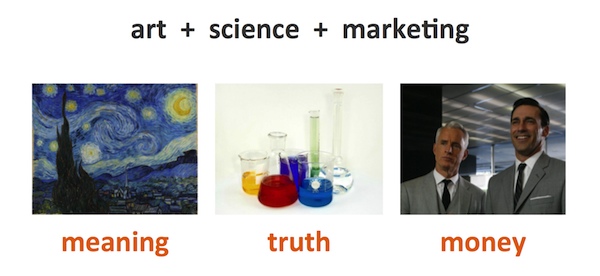

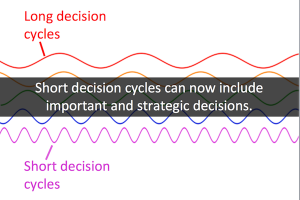
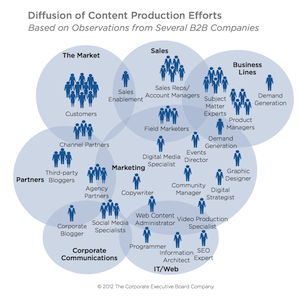
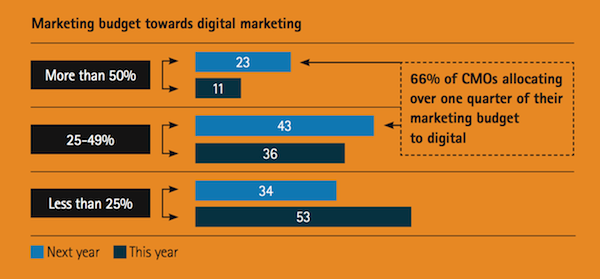
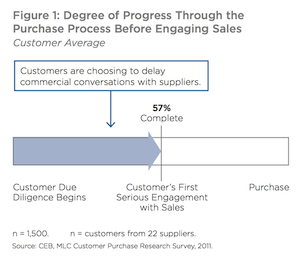

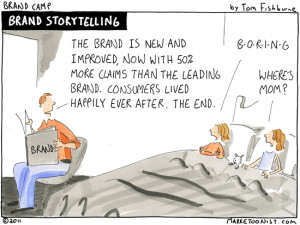
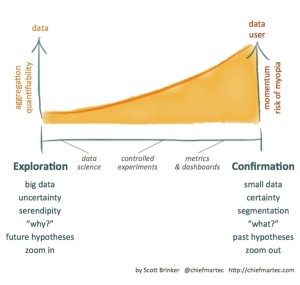
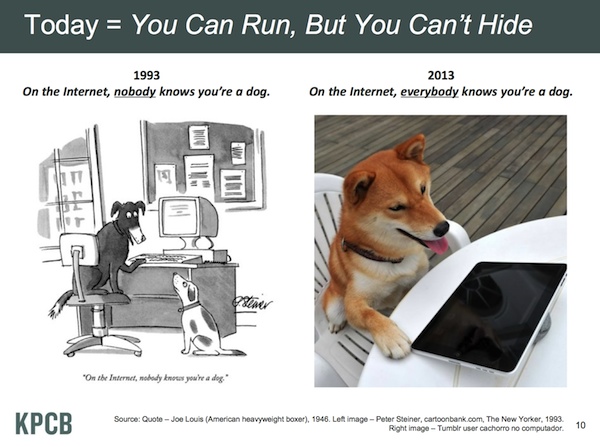
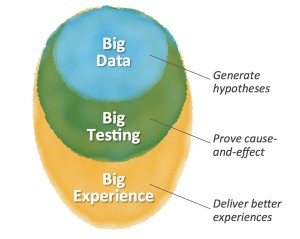
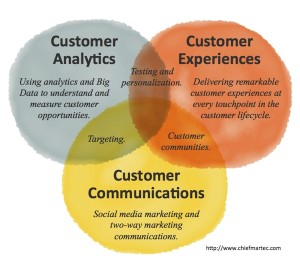
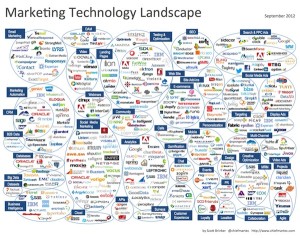

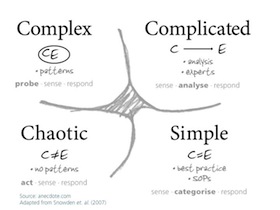



Scott, your long & windy…but very good!
Thanks. 😉
Scott – this is brilliantly done and kudos to you and whoever helped you pull this story together.
Thank you — glad it resonated with you!
Your articles and definition have given me inspiration and more clarity in piecing together all the different roles and skills I’ve performed/acquired over the past 12 years. Thank you.
Yes long, but a great recap of what is going on in today’s world or marketing!
Art is the science of expression
Technology is the future of marketing and marketers. I just got your book Hacking Marketing. I particularly like the concept of adapting ideas software to marketing.